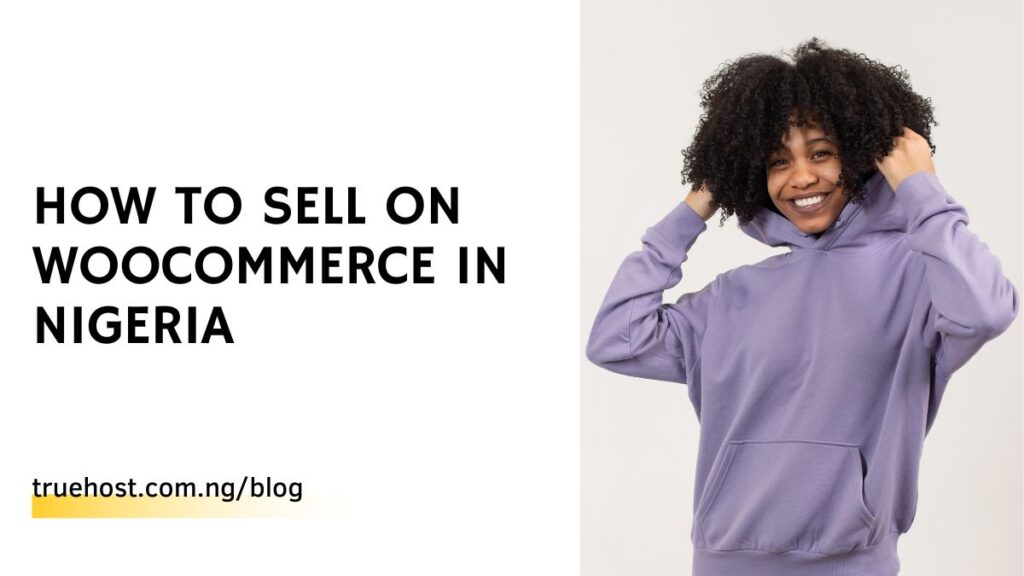In Nigeria, many aspiring entrepreneurs are turning to WooCommerce as a platform to start their online businesses. WooCommerce, known for its user-friendly interface and powerful features, has gained popularity among Nigerian entrepreneurs looking to venture into e-commerce.
WooCommerce is a plugin for WordPress, a widely used website-building platform. It allows users to set up online stores and sell products or services seamlessly. Its popularity in Nigeria stems from its flexibility, affordability, and customization options.
One of the significant benefits of using WooCommerce for e-commerce in Nigeria is its accessibility. Entrepreneurs can easily set up their online stores without the need for advanced technical skills or significant financial investments. With WooCommerce, you can start selling your products or services online quickly and efficiently.
Furthermore, WooCommerce offers a range of features tailored to the needs of Nigerian businesses. From customizable storefronts to secure payment gateways compatible with local payment methods, WooCommerce provides entrepreneurs with the tools they need to succeed in the Nigerian e-commerce market.
In the following sections, we’ll delve deeper into how to sell on WooCommerce in Nigeria, exploring the steps to set up your online store, optimize your product listings, and attract customers to your business. Let’s embark on this journey to discover the endless possibilities of e-commerce with WooCommerce in Nigeria.
Setting Up Your WooCommerce Store
Setting up your WooCommerce store in Nigeria is an exciting step towards starting your online business. Here’s a detailed guide on how to get started:
a). Choosing a Web Host Operating in Nigeria
The first step in setting up your WooCommerce store is choosing a reliable web hosting service that operates in Nigeria. Look for hosting providers that offer fast loading speeds, excellent uptime, and customer support tailored to Nigerian users. Consider factors like pricing, security features, and scalability to make an informed decision.
b). Installing WordPress and the WooCommerce Plugin
Once you’ve selected a web host, it’s time to install WordPress, the leading content management system (CMS), and the WooCommerce plugin. WordPress powers millions of websites worldwide and provides a user-friendly interface for managing your online store. WooCommerce, on the other hand, is a powerful e-commerce plugin that seamlessly integrates with WordPress, allowing you to sell products and services online with ease.
c). Configuring Basic Store Settings
After installing WordPress and the WooCommerce plugin, you’ll need to configure basic store settings to customize your store according to your preferences. Set your store’s currency to Nigerian Naira (NGN) and adjust the timezone to reflect the local time in Nigeria. These settings ensure that your store operates smoothly and accurately reflects local currency and time preferences for your customers.
d). Designing and Customizing Your Storefront
The appearance and functionality of your storefront play a crucial role in attracting and retaining customers. Choose a professional and mobile-responsive theme for your WooCommerce store that aligns with your brand identity and offers a seamless user experience across devices.
Customize your storefront by adding your logo, creating product categories, and organizing your products in an intuitive manner. Consider implementing features like product filters, search functionality, and user reviews to enhance the shopping experience for your customers.
Adding Products
When selling on WooCommerce in Nigeria, adding products is a crucial step in setting up your online store. Here’s how you can effectively add products to your WooCommerce store:
Creating Product Categories and Tags
Organizing your products into categories and tags helps customers navigate your store easily. Think about how you want to group your products to make browsing convenient for your customers. For example, if you’re selling clothing, you might have categories like “T-shirts,” “Dresses,” and “Jeans,” with tags such as “Men’s,” “Women’s,” and “Kids’.”
Importing or Manually Adding Products with Details and Images
You have the option to either import products from a CSV file or manually add them to your WooCommerce store. When adding products, ensure that you provide detailed descriptions, including product features, dimensions, materials, and any other relevant information that can help customers make informed purchase decisions. Additionally, upload high-quality images of your products from various angles to showcase their details and attract potential buyers.
Setting Pricing in Naira Currency
Since you’re selling in Nigeria, it’s essential to set your pricing in the local currency, Naira (NGN). WooCommerce allows you to configure your store’s currency settings to display prices in Naira, making it easier for Nigerian customers to understand and make purchases without the confusion of currency conversion.
Configuring Inventory Management
Proper inventory management is key to running a successful e-commerce business. With WooCommerce, you can track your stock levels, set up notifications for low stock, and manage backorders efficiently. Make sure to update your inventory regularly to avoid overselling and disappointing customers. Additionally, consider implementing inventory management best practices such as maintaining safety stock levels and forecasting demand to ensure smooth operations.
Read also: How To Sell Property Online In Nigeria
Configuring Payments
When selling on WooCommerce in Nigeria, it’s essential to configure payments properly to ensure smooth transactions. Here’s how you can set up payment options for your online store:
a). Choosing Local Payment Gateways: Opt for local payment gateways like Paystack and Flutterwave, which are widely used and trusted in Nigeria. These platforms support various payment methods, including debit cards, bank transfers, and mobile payments, making it convenient for Nigerian customers to purchase from your store.
b). Setting Up Gateway Plugins: Install and configure payment gateway plugins provided by Paystack and Flutterwave on your WooCommerce store. These plugins integrate seamlessly with your website, allowing customers to make secure payments directly through your online platform.
c). Testing Transactions: Before going live, it’s crucial to test payment transactions to ensure everything is working correctly. Conduct test transactions using different payment methods to verify that payments are processed smoothly and that customers receive proper confirmation of their orders.
d). Enabling Offline Payment Methods: In addition to online payment gateways, consider enabling offline payment methods such as bank deposits. This option allows customers who prefer to pay offline to complete their transactions by depositing money into your bank account. Make sure to provide clear instructions on how customers can make offline payments and verify payments promptly upon receipt.
Setting Up Delivery
To successfully sell on WooCommerce in Nigeria, you need to set up your delivery options properly. Here’s how you can do it:
a). Integrating Shipping Providers: Consider integrating shipping providers like Sendbox and Metro Africa Express into your WooCommerce store. These providers offer reliable shipping services across Nigeria, ensuring that your products reach customers promptly and securely.
b). Configuring Shipping Zones, Rates, and Methods: Start by configuring shipping zones based on the regions you want to ship to within Nigeria. You can set different shipping rates and methods for each zone, depending on factors like distance and delivery speed. This allows you to offer flexible shipping options to your customers while managing shipping costs effectively.
c). Enabling Cash on Delivery Plugin: In Nigeria, cash on delivery (COD) is a popular payment option preferred by many customers. Enable a COD plugin on your WooCommerce store to allow customers to pay for their orders in cash upon delivery. This gives your customers the flexibility to pay only when they receive their products, enhancing trust and convenience.
By integrating shipping providers like Sendbox and Metro Africa Express, configuring shipping zones, rates, and methods, and enabling a cash on delivery plugin, you can streamline the delivery process for your WooCommerce store in Nigeria. This ensures that your customers receive their orders efficiently while providing them with flexible payment options that suit their preferences.
Promoting and Growing Your Store
Once your WooCommerce store is set up in Nigeria, the next step is to promote and grow your business to reach more customers. Here are some effective strategies to help you achieve this:
SEO Optimization for Nigerian Audience
Optimize your website content for search engines to make it easier for Nigerian customers to find your store online. Use relevant keywords and phrases that resonate with your target audience and include location-specific terms to attract local traffic.
Local Paid Advertising through Google and Social Media
Invest in paid advertising campaigns on platforms like Google and social media channels such as Facebook, Instagram, and Twitter. Target your ads to reach Nigerian audiences based on their interests, demographics, and online behavior. This way, you can increase visibility and attract potential customers to your WooCommerce store.
Reaching Out to Nigerian Influencers and Bloggers
Collaborate with Nigerian influencers and bloggers who have a significant following in your target market. Partnering with influencers can help you reach a broader audience and build credibility and trust for your brand. Consider sponsoring posts, reviews, or giveaways to generate buzz and attract attention to your products.
Promotions and Sales Campaigns
Run promotions and sales campaigns to entice customers and encourage repeat purchases. Offer discounts, coupons, or special deals during festive seasons, holidays, or other relevant occasions in Nigeria. Create urgency by setting limited-time offers to prompt customers to take action and make purchases from your WooCommerce store.
Read also: 14+ Best Profitable Business Ideas In Lagos
Conclusion
In wrapping up, let’s recap the essential tips for successfully launching a WooCommerce store in Nigeria. It’s crucial to configure payments using local gateways like Paystack and Flutterwave, set up gateway plugins, and enable offline payment methods such as bank deposits. These steps ensure smooth transactions and cater to the preferences of Nigerian customers. Localization and targeted marketing play a significant role in the success of your WooCommerce store.
By understanding the local market, cultural nuances, and consumer behaviors, you can tailor your products and marketing strategies to resonate with Nigerian customers effectively. Consider factors like language, currency, and shipping options to create a personalized shopping experience that builds trust and loyalty. As you embark on your ecommerce journey, I wish you success with your WooCommerce store in Nigeria.
Read also: How to Sell on Payporte: Step By Step Guide


